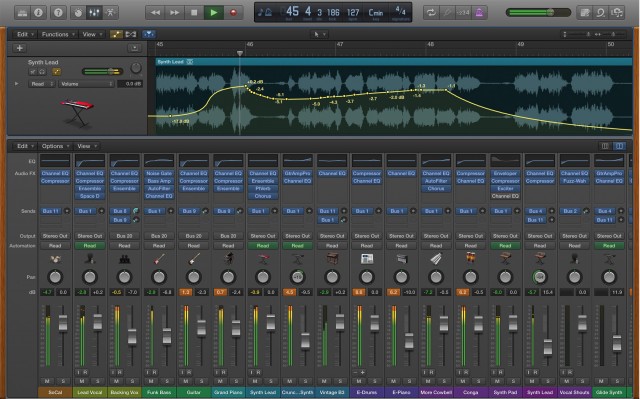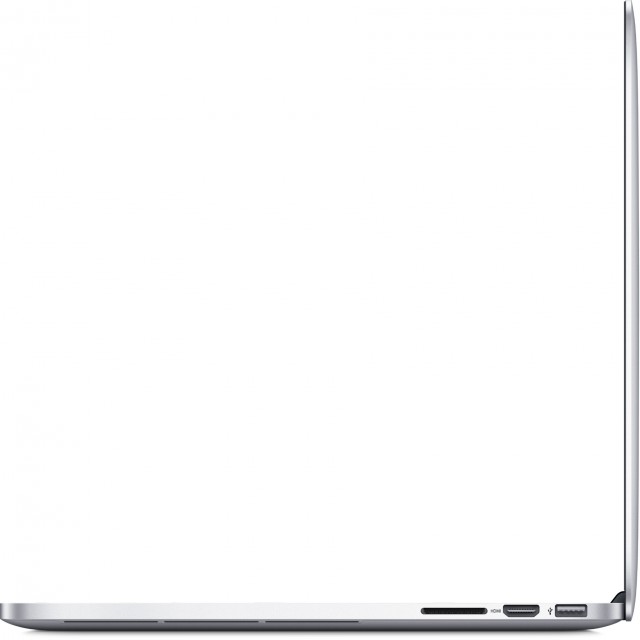There’s an oft-repeated conventional wisdom about Apple that I think is just plain wrong, and it goes something like this:
The success of the iPhone and iPad means that Apple is now a consumer company, and doesn’t care about pros.
Now, let’s parse the above statement and say Apple sometimes makes decisions pro audiences don’t like. Well, that’s certainly true; it just happened to be true prior to the success of iOS.
It’s time to face this question again, partly because of the widely-noticed demise of Apple’s Aperture for pro photography workflows, but also because of significant and under-appreciated updates to all the other pro apps.
First, let’s acknowledge that we’re talking about three Apples: there’s Apple the computer and mobile hardware maker, Apple the OS vendor, and Apple the pro app developer. In each category, I would contrast it with its rivals in terms of the attitude toward pros and consumers.
This is not an endorsement of Apple above other computer makers. There are some fine PCs out there, and some are terrific values. There’s Windows-only software worth using – for music, including SONAR and FL Studio. The fabulously-innovative Sensomusic Usine combines modular sound powers with multi-touch you can use on high-performance laptop/tablet hybrids, something not available from Apple. (You can run Usine on Mac, too, but you can’t buy a MacBook with touch input yet, of course.) Some of you will run Windows on Apple hardware; some of you will pick PC hardware. And while many higher-end laptops fall into the same price brackets as Apple, PCs are particularly good when it comes to saving you money on desktop systems. (Ironically, the Mac Pro is now so “pro” in the sense of high-end hardware, it’s out of reach for those who don’t have big budgets.)
But it’s possible to say that you have a choice between Apple’s offerings and PC platforms (even, for some, those running Linux), rather than to say that Apple is just for consumers. It just doesn’t fit the facts.
I think it’s time to dispel the myths that somehow there’s a “new,” anti-pro Apple.
Pro Apps. First, about those updates.
Yes, Apple’s Aperture was discontinued. Sometimes, killing a product is the right thing to do. Software makers sometimes enter a market and discover later that they haven’t differentiated themselves enough from the competition to make an ongoing investment. It seems that’s what’s happened here. Aperture had some great ideas in it, but photographers already migrated to Adobe’s Lightroom long ago, and with good reason – Aperture has badly lagged Lightroom in virtually every stage of the workflow. (Now, that means you’re stuck coughing up $10 or more a month to Adobe, but you’ll have to complain to Adobe about that, not Apple.)
Happily, back in the world of music production – and even, to an extent, video production – we have more than one vendor. Heck, it’s clear that music making will forever be entirely fragmented, which happily leads to loads of competition and differentiation.
But as Apple is killing Aperture in favor of the consumer-focused Photos in Yosemite, it’s clear they continue to update the video and music production apps and view them distinctly from consumer apps. In each case, you still have other options (Avid’s software, Premiere for video, and the too-many-to-count options in DAWs), so even if Apple were to abandon all its Pro Apps, the Mac would remain a compelling platform. But given the interaction of OS, hardware, and app, it’s comforting to know Apple still has some skin in the game.
Apple has changed their approach to Pro Apps, with a steady stream of updates that deliver through the App Store. That includes several updates a year, so that users get fixes and enhancements more quickly. It’s an update cadence that would be nice to see from other vendors, too. Obviously, you want to require as few fixes as possible to larger releases that come out, but users also now expect responsiveness to changes they do want.
Logic Pro X 10.0.7 was therefore the seventh update in less than a year. Apple has allowed up to 24 processing threads, which means Logic can take advantage of 12-core Mac Pro models. Apple wasn’t able to provide benchmark data, but it appears at the very least that this should for the first time give musicians a reason to evaluate the Mac Pro. (If anyone has the projects large enough to need something like that, please get in touch.)
10.0.7 also resolves support for instruments and plug-ins with step sequencers built in even in Low Latency Mode. You can use MIDI volume and pan to control a plug-in if you like, and not only a channel strip. You can (finally) Marquee-select automation data to copy it. And in a sign that it is important Apple supports both video and music application development, they’ve improved XML file exchange between Logic and Final Cut.
Apple also clearly views the “consumer-to-pro” migration path as important on Logic, even if the same path no longer exists for photographers. Earlier this year, they even created a page to promote the idea:
Moving from GarageBand to Logic Pro X
On the video side, Apple has finally fixed the biggest remaining annoyance in Final Cut Pro X – the inability to put libraries where you like. That includes optimized, proxy, and rendered media – and now you can delete that same media from inside Final Cut. So, it’s finally possible to keep your project storage neat and tidy, and keep from burning through those fast-but-small SSDs you’ve got internally on laptops.
4K is here, too. Apple ProRes 4444 XQ support is available across Compressor, Motion, and Final Cut, there’s new improved camera and hardware support, and you can even upload 4K video to Vimeo.
Now, of course, music in particular is an ecosystem. Logic users use plug-ins from Native Instruments and Waves and Universal Audio. And Mac users use software other than Logic and Final Cut. But it’s hard not to think that it’s a good thing that Apple’s OS team, in supporting developers of pro apps, have to support Apple as one of those developers. The quality of non-Apple software for the Mac is exceptional; it’s clearly not necessary to have your pro developer be “close to the hardware.” But the reverse seems to be more significant: it’s likely healthy for all involved that Apple themselves are supporting serious creative applications, and that some of those come from inside the same building.
(A reasonable objection to this line of thinking: Apple has aggressively priced their software low, because their revenue model is tied to hardware. And even without that issue, of course, Apple is forcing developers for their platform to compete with apps they themselves make – even on the iPad. There’s an absence of information here, though, because we lack broken-out sales data on Apple’s pro apps, we don’t know exactly the financial impact on the market, and much of the evidence here is anecdotal. But I know it’s not entirely something makers of Logic’s competitors are happy about.)
Speaking of the OS:
OS: Oddly, there’s a similar repeating cycle on operating systems. Meanwhile, Apple has support at the OS level for things like inter-app audio and bluetooth MIDI on both desktop and mobile, which Windows and other mobile platforms don’t. And here we’ve reached another major OS milestone that naysayers feared would break the stuff we use. It doesn’t.
iOS 8 includes improved audio plumbing, while building on the existing foundation that supports pro audio development. (One lone casualty of recent mobile OS changes is JACK, the cross-platform inter-app platform. But as this platform was never widely adopted on Apple mobiles, and with various other options for the most common use cases it addresses, that’s hardly a deal breaker.)
OS X Yosemite, while on the surface is mostly about other features (like mobile integration), still includes enhancements to underlying frameworks and otherwise can be filed firmly under “if it ain’t broke, don’t fix it.”
Updates are still sometimes rocky for music production, but the old advice holds: don’t be an early adopter. Let the folks making your music software and hardware do the beta testing, unless you relish that responsibility yourself.
Hardware. We’ve heard the “sky is falling” argument as far as Apple’s hardware. But on the mobile side, Apple is now making high-spec, fast machines. The iPad Air, for instance, is a real workhorse for audio, capable of running loads of apps at once and with processing power music developers are just beginning to exploit. Apple’s laptops, while requiring you to reach a bit into your pockets, now make terrific use of the Thunderbolt bus in ways that empowers audio applications, and have spectacularly-crisp displays. And while storage is getting expensive internally, that’s partly because Apple is shipping no-compromise, high-end SSDs.
I’ve just bought a 13″ MacBook Pro, which I think is a sweet spot on value once you have a reasonable SSD, use some external storage to supplement it, and get at least 8G of RAM.
Upgradeability is a concern, though I think it makes sense to spec the machine you want the first time. It’s more reasonable to mark off points on repairability; it’s a shame that you now have to swap out the logic board for so many repairs. (Apple assures us they’re being ecologically sensitive with those discarded parts, though I’ll leave that discussion for another forum; as far as the impact on you, AppleCare is now more important than it was before.)
As always, caveat emptor – I’d skip, for instance, the low-end iMac Apple just unveiled, as you lose too much performance and capacity for the price savings.
Again, it’s worth comparing if you are OS-agnostic, but anyone complaining about these choices might just be downright spoiled. If a PC works out to be a better value for you in the hardware you need and the software you use, go for it. (It’s a different game if you need high-end GPUs, but that’s a niche – and not particularly relevant to musicians.)
But given that there are strong PC and Mac choices, is it really worth any angst over this issue?
The Desktop is strong, for now. If any company veered toward merging consumer and pro concerns, it was Microsoft. But the recent unveiling of the Surface Pro tilts Microsoft back to pro users – enhanced, laptop-style performance, desktop, Intel-based OS. And on the Apple side, pro Apps and OS X clearly differentiate the desktop user in a way that supports creative work. The fact that their mobiles are earning more desktop-class processing power and the likes, well, that’s hardly bad news.
I think it’s time to spend this energy elsewhere. The computer as we know it is for the most part better than ever.
If anything, we need to stop worrying about backwards motion and start thinking forward. Desktop creative software is still stuck in 90s-era metaphors. Most of it doesn’t deal with touch input or gestures – even trackpad gestures in many cases. It doesn’t deal with Internet connectivity in any meaningful way. It doesn’t scale properly to higher-resolution displays. It doesn’t deal with the widespread use of mobile devices in most cases – most desktop software lacks dedicated mobile control or round-trip mobile workflow options.
I think Apple, Microsoft, and other vendors have built reasonable platforms. Rather than worry whether they’re back-pedalling, it’s time to consider what could be done to do more with the foundation we’ve got.

